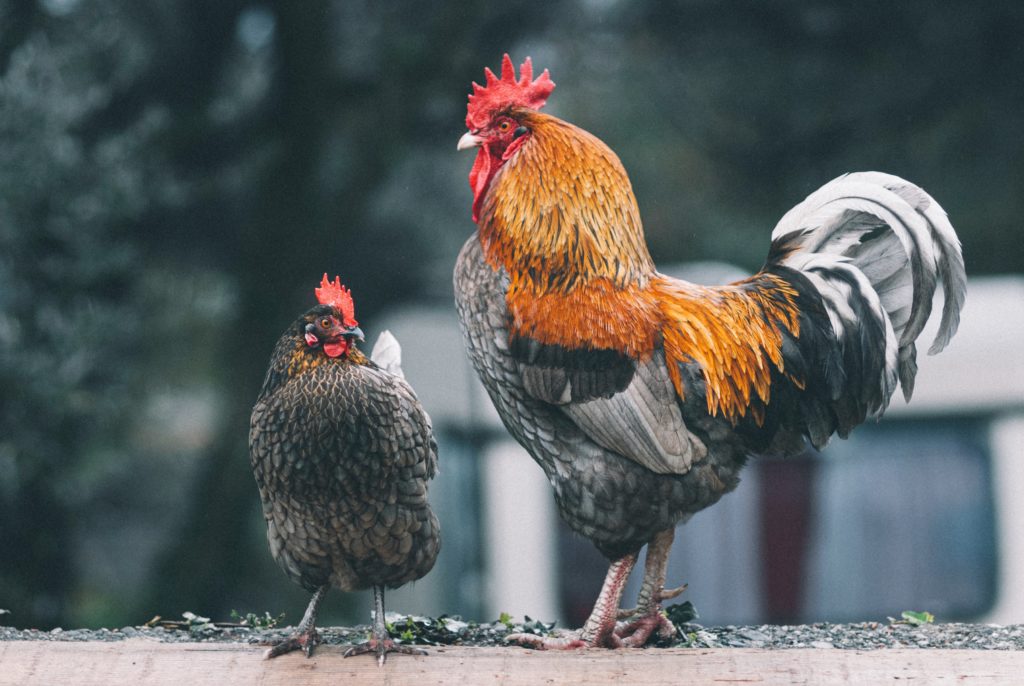

‘Indeed, stock is everything in cooking. Without it, nothing can be done. If one's stock is good, what remains of the work is easy; if, on the other hand, it is bad or merely mediocre, it is quite hopeless to expect anything approaching a satisfactory meal.’
_ Auguste Escoffier, The Escoffier Cookbook and Guide to the Fine Art of Cookery
Every kitchen should have a slow cooker on the go, without exception between the months of October to March as a bare minimum.
A slow cooker is the easiest way to get your health to the top of the pecking order with minimum output from you. My only stipulation is that your bones are free range or organic with a preference for organic.
Bones represent strength, integrity and hard work. They have been used throughout the centuries to make tools, knives, and furniture. They have been used alongside building materials amongst many other uses. Their qualities in the kitchen are equally impressive.
Be careful what you wish for
We take the wishbone of a chicken or a turkey and we make a wish, a pastime adopted from the Romans. Stock and broths used to be cited by Sally Fallon, or Patience Gray, or in archives of The Western A. Price Foundation. They were for chefs in high faluting restaurants because the invention of the dehydrated bouillon cube made liquids less appealing to travel.
The Food industry is no stranger to prostitution and we have become prostitutes in our desire to have more for less. We are about to do this again but at what cost?
So whilst I cannot change global health I may be able to assist in changing a few household habits for better mental and physical health.
Making bone broth is easy, let me show you how.
Benefits of bone broth:
Bone is also full of a variety of minerals, including:
- Calcium
- Magnesium
- Copper
- Iron
- Manganese
- Phosphorus
- Potassium
- Sodium
- Zinc
Gut Health:
Good digestion starts in the mouth
Epithelial cells line the colon, a thick robust mucosal layer lines it too; and then you have a plethora of microbes form diverse backgrounds. It is the epithelial barrier that you need to be careful with as a lack of microbial diversity and abundance and a thinning mucosal layer can quickly cause the integrity of the gut to weaken otherwise known as Leaky Gut.
A leaky gut is an inflammatory environment caused when dietary proteins leak into the blood stream raising the inflammatory response by the immune system. its the LPS (Lipopolysaccharides) that when in abundance create an immune response.
Gelatin:
Drinking bone broth and all that gelatin absorbs water helping to stabilise and maintain the mucosal layer that prevents gut microbes from sticking to the intestinal barrier.
Gelatin can reduce the severity of colitis as it strengthens the mucosal barrier.
It reduces inflammation that the LPS creates.
Glycine has been shown to protect against gastric ulcers as well. Glutamine also helps maintain the integrity of the gut mucosa and intestinal barrier.
Glycine: Amino Acid
Glycine stimulates the production of stomach acid, which is essential for the proper digestion of any meal.
Glycine can protect against stomach ulcers
Low stomach acid (hypochlorhydria) is surprisingly common in developed countries and can lead to a number of health issues, indigestion, heartburn, GERD.
Glycine is also an important component of bile acid, which is released to aid in the digestion of fats in the small intestine. Bile acid is important for maintaining normal blood cholesterol levels.
The presence of gelatin in the gut also draws fluid into the intestine, which improves gut motility and supports healthy bowel movements. Low blood levels of collagen have been associated with inflammatory bowel disease.
Let's get slow cooking!
What you will need:
The bones (preferably pasture raised)
- 6 pounds of chicken bones
- 1 pound of feet
The Vegetables:
- 1/2 pound onions
- 1/2 bunch of celery
- 1 pound leeks
- 3/4 pound of carrots with green tops
- 1 small fennel bulb
- 2 tbl cider apple vinegar
- 5.7 litres if water – cold
- Herbs: bay leaf, thyme, parsley, peppercorns (whole) sea salt
What to do:
- Preheat the oven to 220 C to roast the bones to golden brown. Do not roast the feet, put them straight into the stock pot. It is the feet that hold the majority of the gelatin.
- Chop all the vegetables, set aside
- Add the vinegar to the water with the chicken and let the chicken rest for an hour in cold water.
- Set on high until the liquid starts to ripple, then return to a low heat and skim the impurities of the surface of the water.
- Keep on a low heat for 8-12 hours
- You can refrigerate for 2 days or freeze.
Categories
All Categories acid reflux alcohol bacteria bloating bowels broth calories cleanse coffee cold water therapy collagen constipation diet dieting digestion dry mouth eating ecology energy fatigue food gums gut health hairline hormones ibs inflammation liver menopause microbiome nutrition omeprazole protein recipe rosacea seasonal sibo skin sleep stress weight loss
